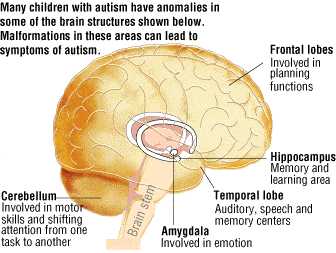Researchers Case Western Reserve University School of Medicine and the University of Toronto have demonstrated for the first time that is possible to confirm or independently assess clinical diagnoses of autism in children simply by analyzing their brain activity. Reliable and efficient, their method might be employed at a massive scale as a means of accurately detecting the condition much longer in advance, as well as determining the anatomical abnormalities associated with autism.

Since the brain’s neurons generate electric current to communicate between each other, a magnetic field also arises. After placing 141 sensors on the scalps of 19 children, nine of whom were previously diagnosed with autism spectrum disorder (ASD), the researchers were able to track the magnetic field generated in the cortex of each child and generate a dynamic pattern of brain activity. Researchers found significantly stronger connections between rear and frontal areas of the brain in the ASD group; there was an asymmetrical flow of information to the frontal region, but not vice versa.
“We asked the question, ‘Can you distinguish an autistic brain from a non-autistic brain simply by looking at the patterns of neural activity?’ and indeed, you can,” Galán said. “This discovery opens the door to quantitative tools that complement the existing diagnostic tools for autism based on behavioral tests.”
This latest insights are of significant importance, since while other methods are also capable of inferring brain connectivity patterns, they do not however indicate the interactions’ directionality. Using their magnetoencephalography method, the researchers were able to identify ASD with 94 percent accuracy, suggesting this technique may be considered reliable enough to identify anatomical abnormalities in ASD brains.
“It is not just who is connected to whom, but rather who is driving whom,” Galán said.
Their approach also allows them to measure background noise, or the spontaneous input driving the brain’s activity while at rest. A spatial map of these inputs demonstrated there was more complexity and structure in the control group than the ASD group, which had less variety and intricacy.
Findings were reported in the journal PLOS One.






